Mineral wool is very often used to insulate the facades of buildings. It weighs little, relatively easy to install, has good thermal insulating properties and an acceptable price. You can work with mineral wool yourself, if you understand well in the technology and intricacies of the process. On how to warm the facade of Minvata correctly, we will tell in this article.
Mineral wool species and brands
To date, the construction industry uses 3 types of mineral wat. What are these materials and what characteristics they possess, we will also tell me further:
- Glasswater is a light fibrous material consisting of very thin glass threads whose thickness ranges from 5 to 15 microns. The fiber length is about 15-50 mm. Raw materials from which glass gamble gives the material elasticity and good strength, but when working it is important to take into account the fragility of the fibers that have a property crumble and dug into the skin. The glass gamble is a danger to eyes and lungs, so when it is installed, it is necessary to use glasses, respirator, gloves and appropriate clothing. A similar insulation can withstand heating to 450 ° C and cooling up to -60 ° C.
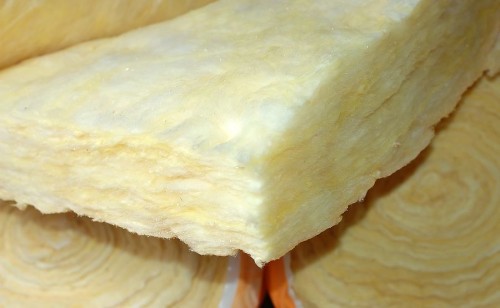
- Slotovat is another subspecies of mineral wool. Such material is made from domain slags, its thickness varies from 4 to 12 microns, the fiber length is approximately 15-16 mm. The slag is not used in the insulation of facades and water pipes, since it has good hygroscopicity, moreover, the material enters into chemical reactions with metal surfaces. As in the case of glass, it is necessary to work with a slag, protecting the eyes, skin and lungs from microscopic fragile fibers of the material. Slotovat is well tolerated high temperatures and withstands heating to 300 ° C.
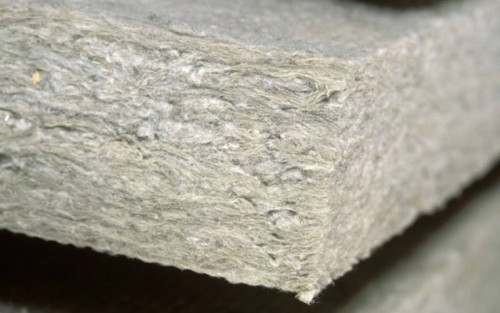
- Stone wool has the fibers of the same length and thickness, as well as its previous analogue, but the plus of this material is that its fibers are not so fragile, they will not crumble and do not prick. In addition to good thermal insulation properties, the stone wool also has a portability of high temperatures and withstands heating to 600 ° C. It is this material most often used in the insulation of facades of houses. Stone wool contains in its composition various components: clay, mixti, limestone, domain slags and dolomite. These components give the material to a certain fluidity and reduce the percentage of the content of binding components, which, in turn, makes stone wool more secure for health, but also less moisture resistant. Another variety of such material is basalt wool, which is made from the gabbro-diabase. It does not contain any additional impurities, well makes very high temperatures that can reach 1000 ° C. Such cotton can be cooled to -190 ° C, while it will not lose its operational qualities. The basalt wool is presented in several versions: in the form of sheets, rolls, mats, as well as scattered material.
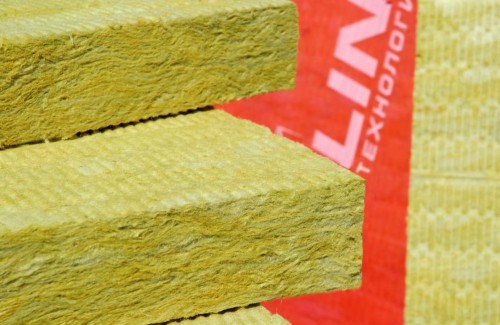
Before heating the facade of Minvata, it should also be understood in its brands:
- The Minvat of the P-75 brand is often used for thermal insulation of horizontal surfaces. The density of this minvati for the facade is 75 kg / m³ - this indicator is not enough to carry out large mechanical loads. Such material is most often used in insulation of attics and roofs, as well as gas, oil and heat-central pipes.
- The material of the brand P-125 has a density of 125 kg / m³. It is advisable to use this mineral wool in the interior decoration, namely floors, ceilings, walls and partitions. By the way, the mineral wool of this brand, besides the ability to keep the heat well, also has sound insulation qualities and protects the inner space of the room from external noise.
- The mineral wool brand PJ-175 has an increased density, which is 175 kg / m³, as well as good stiffness. The sphere of its use is the insulation of walls and overlaps made of metal or reinforced concrete.
- The material of the PPH-200 brand is considered the most dense among its analogues, because the density indicator is at least 200 kg / m³. Increased rigidity - another distinguishing feature of the Minvaty of this brand. Like the previous material, WATT PPH-200 is used for the insulation of reinforced concrete and metal walls and overlaps, and besides this, it can be used as an additional fireflow of buildings.
Benefits and disadvantages of mineral wool
The insulation of the facade of Minvata under Siding has a number of benefits:
- The material allows you to protect the houses of the house from the cold cold, making the room with cozy and warm.
- Mineral wool does not burn, and at a very high temperature can only melt. This means that in the event of a fire, the material will not support the burning and will not become a source of poisonous smoke.
- The facade, separated by mineral wool, does not heat and does not mold from moisture, because this insulation has good vapor permeability.
- In the premises of the building, the walls of which are inhabit the mineral wool, there are no extraneous noises, because cotton wool absorbs sounds due to their porous, but sufficiently dense structure.
- The service life of the Ministry of Service noticeably exceeds the use of foam. The durability of such a material is due to the fact that it is resistant to different kind of damage, and not prone to deformations.
- Mineral wool is not afraid of insect attacks, rodents and other pests, it is not a favorable medium for breeding mushrooms and bacteria.
Along with positive qualities, a minvat for the facade also has a number of negative properties:
- Stone wool, which is used for the insulation of buildings, does not have the same dangerous spiny fibers like a wool from glass. Nevertheless, the microparticles of this material in the process of work still can enter the air in the form of the smallest dust, harmful to human lungs. This means that the finish of the facade of mineral stone cotton can only be performed in the appropriate clothing and using respirators.
- Among the Components of Minvati is formaldehydes - toxic substances that, during evaporation, they can harm their health. Inhale air saturated with formaldehyde evaporations is dangerous, but if in the process of work in conscientious observe security measures, the Ministry of Service will not cause any harm.
Facade Warming Technology
- The first stage of the finishing of the mineral wool building is the preparation of the working surface. Such preparation is to remove from the facade of the building of all foreign objects and communications. If some elements cannot be removed, they should be prepared for further sewing in the layer of insulation. Metal parts, like lightning effluents, you need to dismantle. It will be possible to install them back only after the complete finishing of the facade. Among other things, the wall should not contain protruding nails, parts of the reinforcement and other parts of ferrous metal. The wall will also not hurt to clean up from the influx and heights, mold, moss and other contaminants. The reliability of the plaster also need to be checked and knock down the layer in those places where it moved away from the surface. The metal should be removed from the surface also for the reason that in the event of an occurrence of moisture droplets, it will start rust, the rust will come to the insulation layer and ugly spots will perform on the surface of the finish finish.
- The next step in the insulation of the facade of Minvata is to develop a detailed action plan. This is especially true for those who do not have sufficient experience in such work. To begin with, the mineral wool finish can be carried out on a small segment of the wall, which is in the most inconspicuous place.
- An important stage of the insulation of the facade is the priming of the walls. For such work, it is desirable to use deep penetration compositions. In the event that there are mold and fungi on the walls, it is better to resort to the help of special means. It is advisable to use a wide scroll for the priming of the walls, as the roller apply the primer is not very convenient.
- So that the insulation was laid on the wall as much as possible, and there were no significant gaps between the individual plates, it is also desirable to create a check map. The provisional map implies a breakdown of the working area to certain zones. In these zones, horizontal, vertical and diagonal provisions are made using a conventional caprochy cord. The process of installing the provisions does not represent any complexity. To do this, you need to do a small hole in the top of the wall and drive a piece of fittings there. From the bottom, strictly opposite the first hole, the second and also insert the reinforcement into it. Then you need to measure the distance from the wall, equal to the thickness of the insulating layer, as well as add 1 cm of stock. At this level, the cord is tightened between the segments of the reinforcement. Similarly, the vessels are installed throughout the wall, the distance between the cords should be 80-90 cm. Chers are desirable to do not only in vertical, but also horizontal and in diagonal directions. Also note that the valve after the completion of the work should be freely removed from the wall.
- Stretching the provisions is convenient because in the process of insulation the walls do not have to check the quality of the work of the construction level every time. The first row of sheets of minvati must be installed exactly horizontally, and then you can do the work, focusing on the stretched cords. The level will only occasionally apply to the surface to check the quality of the finish performed.
- The next stage of installation of mineral wool is to install a guide profile. This profile will serve as support for the first row of minvati, as well as provide the desired gap between the layer of the insulation and the surface of the wall. To install the guide profile, you will need a water level, a dowel 6x4, a mesh, glue for mineral wool and a deduction cord. Before installing the profile on the wall you need to find a zero point using a water level. Then, with the help of a folding cord, along the entire surface of the wall at the selected level, a line should be designated. From the grid you need to cut off the strip of a width of 25 cm. Then the glue is applied for mineral wool to these bands, after which the mesh is fixed on the wall at a height of 10 cm from the marked line. Then the guide profile is applied to the wall and the dowel is fixed.
- After mounting the guide profile, you can start the insulation of the facade of the house of the Ministry of Internal Affairs. To do this, you need to dissolve in a suitable container of the glue composition. Dry powder is mixed with water in the proportion, which is indicated in the instructions for the product. Then all components are thoroughly mixed with a construction mixer and leave for 5-7 minutes. After this time, the glue prevented again, after which the composition is ready for work.
- The dissolved glue is applied on the slab from the Minvati and is distributed over its surface with a comb spatula. Please note that the point applying of glue in this case will not allow the insulation to firmly on the wall. Among other things, the layer of glue makes the Minvatu more rigid and does not give it to be deformed under the action of moisture and fluctuations in temperatures.
- When the entire stove is covered with adhesive makeup, it must be applied to the wall by setting the lower edge to the base bar. Using a water level, check how exactly the stove is worth. Vertical and horizontal levels should have an angles of exactly 90 °.
- In the same way the next plate is installed on the wall. The quality of work performed can be checked on previously made. Note that the seams between the individual plates had a gap of no more than 5 mm. If this indicator is more, the remaining plates will eventually be installed unevenly, and cold will fall through the resulting gaps to the room.
- When the first mineral wool will be fixed on the wall, the plates should be consolidated by plate dowels, to provide the material the best mount on the surface. Even the most high-quality glue will not guarantee that the layer of mineral wool will hold on it for many years, but when using dowels, you can be confident in the durability of the facade. To fix the sheets of minvati on the wall, it is advisable to use a dowel with a metal rod. If the building has no more than 5 floors in height, approximately 5-7 carbed dowels should be used on 1 m² of minvats. For insulation sheets, which are located above the 5th floor, this amount should be about 7-8 fasteners.
- By separating the entire facade of mineral wool, the deepening, left by the dowels, as well as small gaps between the material plates should be melted with putty. After that, the wall can be reinforced by the facade mesh.
- To cover the surface with glass chopstick, the roll of this material should be rolled through the wall and fasten it from above using a solution or special studs. Then the grid must be coated with a layer of adhesive solution. Next to the first grid fragment you need to lay the second, not forgetting to make the nest between the layers of 10 cm. By the way, so that the wall was smaller, before reinforcement, it is possible to cover it with a thin layer of plaster, which should not exceed 5 mm in thickness. Such a layer will hide small surface defects. It is impossible to apply the plaster with a thick layer, because it will be unreliable and after drying it can turn to places.
As you can see, the technology of insulation of the facade of the minister under the plaster does not constitute anything complicated. If you comply with all the recommendations and try to do work carefully and gently, you can achieve high surface quality. When the plaster dries on the wall, it will be possible to produce the finish finish of the facade.

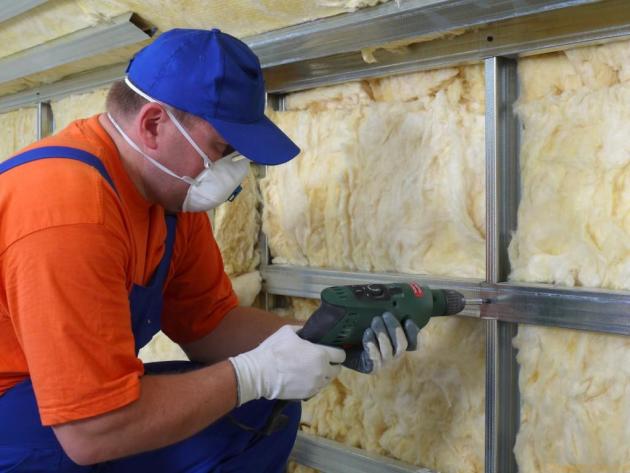
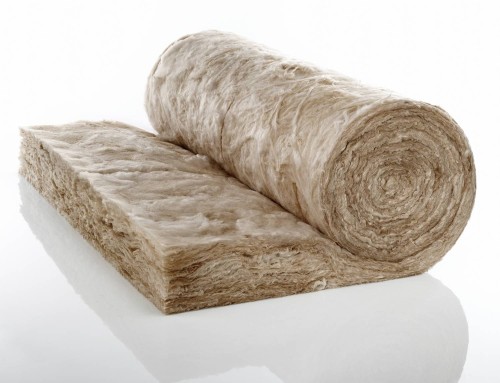
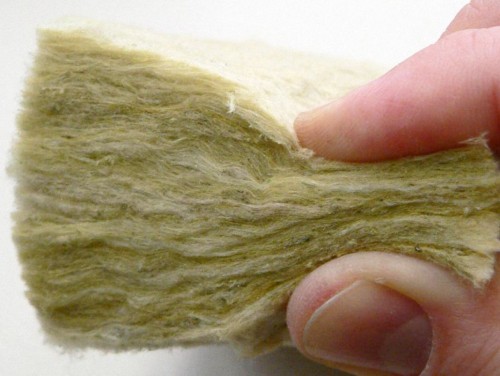


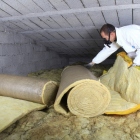
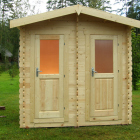
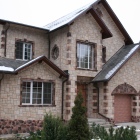
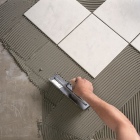
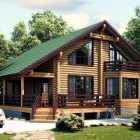
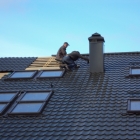

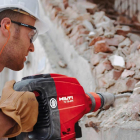
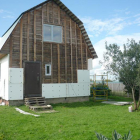
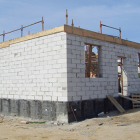
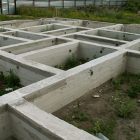
 Start a discussion ...
Start a discussion ...